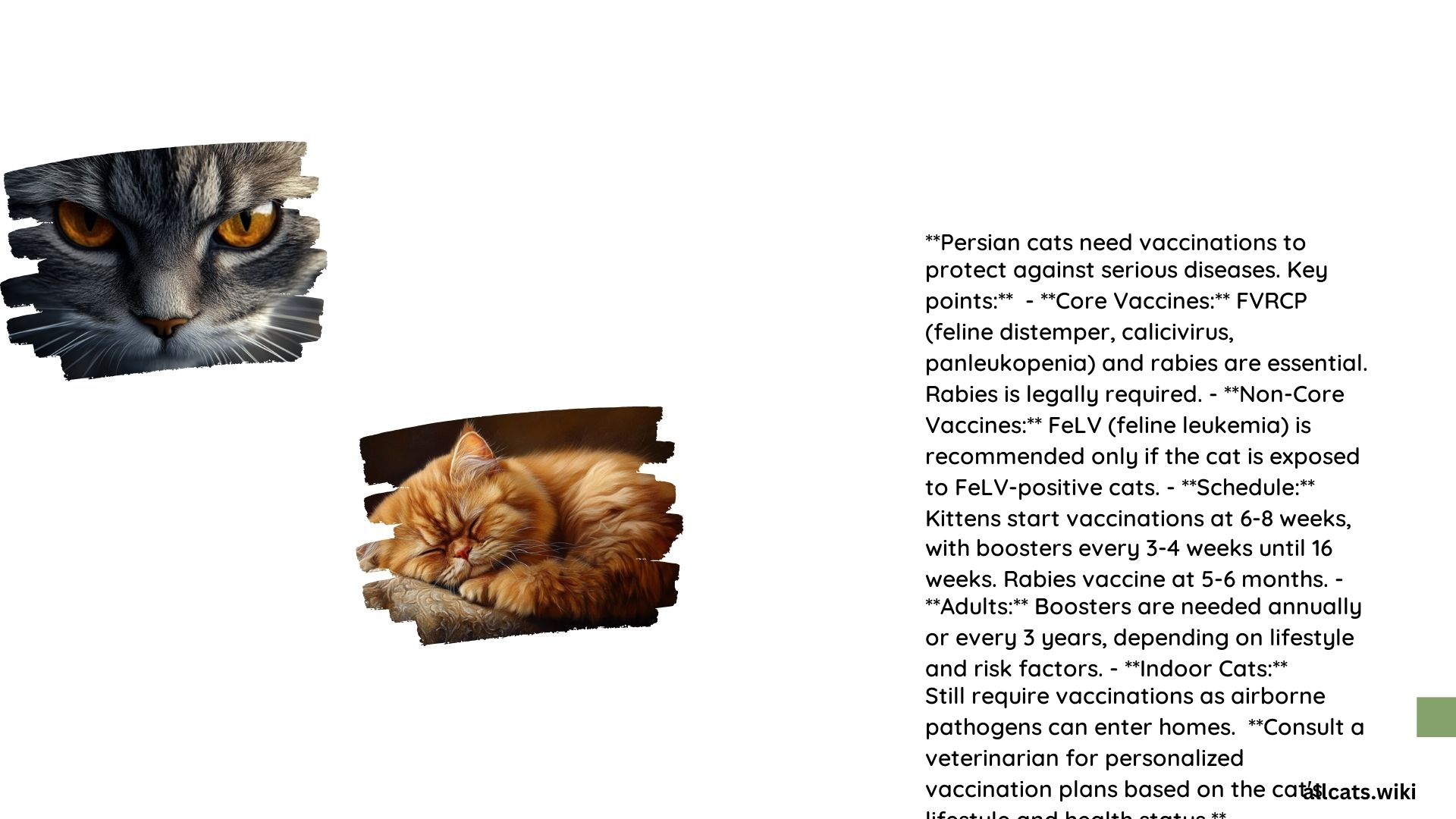Persian cats, known for their luxurious coats and adorable facial features, are a popular choice among feline enthusiasts. As responsible pet owners, it’s crucial to ensure that these beloved companions receive the necessary vaccinations to maintain their health and well-being. In this comprehensive guide, we’ll explore the vaccination requirements for Persian cats, the importance of core and non-core vaccines, and the recommended schedules to keep your furry friend protected.
What are the Core Vaccinations for Persian Cats?
What is the Rabies Vaccine Requirement for Persian Cats?
The rabies vaccine is a mandatory requirement for Persian cats in most regions due to the severity of the disease and its potential transmission to humans. Even indoor cats are at risk if they are bitten by an infected animal that enters the home. The first rabies vaccine is typically given at 12 weeks of age, followed by a booster one year later. Subsequent boosters may be given annually or every three years, depending on the vaccine type.
What is the FVRCP Vaccine Requirement for Persian Cats?
The FVRCP vaccine (Feline Viral Rhinotracheitis, Calicivirus, and Panleukopenia) protects against highly contagious and potentially fatal diseases. Panleukopenia, for example, can cause severe upper respiratory infections and distemper. The FVRCP vaccine series begins at 6-8 weeks of age, with boosters given every 3-4 weeks until the kitten is 16-20 weeks old. An additional booster is recommended at one year of age, and protection generally lasts for at least three years.
What are the Non-Core Vaccinations for Persian Cats?
What is the Feline Leukemia Virus (FeLV) Vaccine Requirement for Persian Cats?
The FeLV vaccine is recommended for cats that are exposed to other cats, especially if they go outdoors. However, it is not necessary for strictly indoor cats unless there is a specific risk factor. If recommended, the FeLV vaccine is typically given at 10-12 weeks of age, with a booster series as advised by the veterinarian.
Why are Vaccinations Important for Indoor Persian Cats?
Even though indoor cats are less likely to be exposed to certain diseases, they are still at risk due to various factors:
- Airborne Germs: Indoor cats can still catch airborne germs that enter the home through doors, windows, or on human clothing and hands.
- Potential Escape: If an indoor cat manages to get outdoors, they are at higher risk of contracting diseases.
What is the Vaccination Schedule for Persian Cats?
What is the Vaccination Schedule for Persian Kittens?
- Begin vaccinations at 6-8 weeks of age, with boosters every 3-4 weeks until 16-20 weeks old.
- Rabies vaccination at 12 weeks, followed by a booster at one year.
What is the Vaccination Schedule for Adult Persian Cats?
- Annual or triennial boosters depending on the vaccine type and the cat’s lifestyle.
What are the Costs and Behavioral Observations for Persian Cat Vaccinations?
What are the Typical Costs of Vaccinations for Persian Cats?
- Core vaccines typically cost around $10-$20 each.
- The total cost can vary based on location and the clinic.
What are the Behavioral Observations After Persian Cat Vaccinations?
- While vaccinations are essential for preventing diseases, behavioral observations such as lethargy, sneezing, or runny nose after vaccination are common but usually mild.
- Persistent symptoms should be reported to the veterinarian.
In conclusion, maintaining a comprehensive vaccination schedule is crucial for the health and well-being of Persian cats, both indoor and outdoor. By understanding the core and non-core vaccine requirements, as well as the recommended schedules and potential costs, you can ensure that your beloved Persian cat is protected from life-threatening diseases and enjoys a long, healthy life.
References:
- Cat Vaccinations: Which Ones are Necessary? – All About Cats
- Vaccines – Ethereal Persians
- Persian | Point Vicente Animal Hospital

